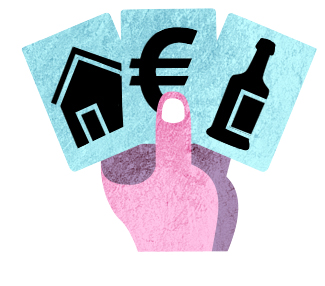Tag: politics
In pursuit of a conscience
19 March 2012 | Drama, Fiction
‘An unflinching opera and a hot-blooded cantata about a time when the church was torn apart, Finland was divided and gays stopped being biddable’: this is how Pirkko Saisio’s new play HOMO! (music composed by Jussi Tuurna) is described by the Finnish National Theatre, where it is currently playing to full houses. This tragicomical-farcical satire takes up serious issues with gusto. In this extract we meet Veijo Teräs, troubled by his dreams of Snow White, who resembles his steely MP wife Hellevi – and seven dwarves. Introduction by Soila Lehtonen

Dictators and bishops: Scene 15, ‘A small international gay opera’. Photographs: The Finnish National Theatre / Laura Malmivaara, 2011
CAST OF CHARACTERS
Veijo Teräs
Hellevi, Veijo’s wife and a Member of Parliament
Hellevi’s Conscience
Rebekka, Hellevi and Veijo’s daughter
Moritz, Hellevi and Veijo’s godson
Agnes af Starck-Hare, Doctor of Psychiatry
Seven Dwarves
Tom of Finland
Atik
The Bishop of Mikkeli
Adolf Hitler
Albert Speer
Josef Stalin
Old gays: Kale, Jorma, Rekku, Risto
Olli, Uffe,Tiina, Jorma: people from SETA [the Finnish LGBT association]
Second Lieutenant, Private Teräs, the men in the company
A Policeman
Big Gay, Little Gay, Middle Gay
William Shakespeare
Hermann Göring
Hans-Christian Andersen
Teemu & Oskari, a gay couple
The Apostle Paul
Father Nitro
Winston Churchill
SCENE ONE
On the stage, a narrow closet.
Veijo Teräs appears, struggling to get out of the closet.
Veijo Teräs is dressed as a prince. He is surprised and embarrassed to see that the audience is already there. He seems to be waiting for something.
He speaks, but continues to look out over the audience expectantly.
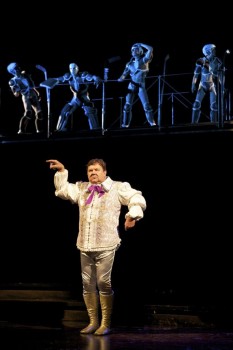
Snow White's spouse, Veijo (Juha Muje), and the dwarves. Photo: Laura Malmivaara, 2011
VEIJO
This outfit isn’t specifically for me, because… I mean, it’s part of this whole thing. This Snow White thing. I’m waiting for the play to start. Just like you are. My name is Veijo Teräs and I’m playing the point of view role in this story. Writers put point of view roles like this in their plays nowadays. They didn’t use to.
Just to be clear – this isn’t a ballet costume. I’m not going to do any ballet dancing, but I won’t mind if someone dances, even if it’s a man. Particularly if it’s a man. But I don’t watch. Ballet, I mean. Not at the opera house, or on television, or anywhere, and I have no idea why we had to bring up ballet – or I had to bring it up – because this is a historical costume, so it’s appropriate. This is what men used to wear, real men like Romeo and Hamlet, or Cyrano de Bergerac. But we in the theatre these days have a hell of a job getting an audience to listen to what a man has to say when he’s standing there saying what he has to say in an outfit like this. People get the idea that it’s a humorous thing, but this isn’t, this Snow White thing, where I play the prince. Snow White is waiting in her glass casket, she died from an apple, which seems to have become the Apple logo, Lord knows why, the one on the laptops you see on the tables of every café in town. More…
Art or politics?
16 February 2012 | This 'n' that
You’re going about your business in Helsinki Railway Station on a cold winter’s day — waiting for your train, buying tickets or newspapers or just taking short-cut through the building to keep warm – when suddenly the bloke next to you bursts into song. And not just him: along with a couple of dozen others, he makes the air ring with the patriotic song Finlandia, sung in harmony and perfectly in tune. (The video can be viewed at http://www.youtube.com/watch?v=wO63xt2jWtc) More…
Panem et circenses?
2 February 2012 | This 'n' that

The Guggenheim Foundation's global network of museums
What does Helsinki need? Bread and circuses, yes, but at what cost the latter?
In January – after a study that cost the Finns a couple of million euros – the Salomon R. Guggenheim Foundation (est. 1937) indicated that it was favourably inclined toward the construction of a new art museum, bearing its name, in Helsinki. The leaders of Helsinki city council are aiming to make a positive decision as soon as possible.
The cost of the building, whose site adjoins the Presidential Palace in central Helsinki, is estimated at 130–140 million euros, with design costs of about 11 million euros. Unlike in the case of Berlin, no existing building is considered suitable; instead, an architectural dream must be realised, with plenty of wow-factor.
Its mere maintenance costs will be around 14.5 million euros a year. It has been estimated that the Helsinki Guggenheim’s income could be 7.7 million a year. In addition, a 20-year Guggenheim licence costs 24.6 million euros.
The project has provoked widely differing reactions. Proponents of the project believe that the Guggenheim brand would bring thousands of new visitors to Helsinki and that half a million people would visit it each year. Opponents doubt this, speak of a ‘Guggenburger’ franchising concept and of the fact that not even the existing art museums of Helsinki are particularly crowded.
The odd thing is, however, that the basic demographic differences between Helsinki and, say, Bilbao – where the Guggenheim museum has been a big success – are constantly ignored in the discussions: the population of Spain is almost 50 million and another 50 million visitors go there every year, while the corresponding figures for this most northerly part of Europe are five million inhabitants and visitors.
In Bilbao, moreover, there was no museum of contemporary art before the advent of the Guggenheim; Helsinki, on the other hand, opened Kiasma, a new museum of contemporary art (165,000 visitors in 2010) in 1998 and the neighbouring city of Espoo its Emma museum of modern art (82,000 visitors in 2010) in 2006.
Economic prospects on any level now offer little hope. The Finnish government, in the shape of the ministry of culture, has just cut grants to state-aided museums by three million euros – the Museum of Cultures in Helsinki, for example, is closing its doors, and some 40 of the museum staff elsewhere will be sacked. The government is not promising any money to the Guggenheim.
How, then, to fund an annual deficit of 7 million euros? Finland does not have a great supply of art-minded millionaire sponsors, and no one has so far made any concrete offers on how to fund this project.
The Guggenheim Foundation itself is not taking any financial risks with this project. Neither has it announced in any detail what sort of art will feature in the museum’s temporary exhibitions.
People who live in the city are more preoccupied with, for example, the shortcomings of the health services: there are waiting lists for everything, often of many weeks, and the old university children’s hospital has outgrown its present space. There are cuts and shrinkages yet to come in the spending structure of the country as a whole and of Helsinki – civil servants themselves estimate that the city’s budget is not sufficient to cover even the upkeep of basic services.
To judge by the public debate, the deep ranks of Helsinki taxpayers do not want a new monument, one for which it will be necessary to pay – in addition to maintenance – more than a million euros a year to an American brand for the mere use of its name, for more than 20 years.
Do the people of Helsinki wish to begin to pay additional taxes for the revival, yet again, of the age-old dream of guaranteeing Finland ‘a place on the world map’, in a situation where economic difficulties are a matter of everyday life for increasing numbers of them? (We believe, incidentally, that Finland already has an appropriate place on the world map.) Will their opinion be asked, or heard?
Jaakko Blomberg: Vakauden kaipuu. Kylmän sodan loppu ja Suomi [Longing for stability. Finland and the end of the Cold War]
2 November 2011 | Mini reviews, Reviews
 Vakauden kaipuu. Kylmän sodan loppu ja Suomi
Vakauden kaipuu. Kylmän sodan loppu ja Suomi
[Longing for stability. Finland and the end of the Cold War]
Helsinki: WSOY, 2011. 696 p., ill.
ISBN 978-951-0-37808-3
€ 37, hardback
From Finland’s perspective, the termination of the Cold War era encompassed three significant processes: the Soviet Union’s policy of perestroika, or reform, and the disintegration of its empire; the end of the international arms race and the rise of joint security as a policy aim of the superpowers; and increasing European integration. This book devotes individual chapters to two phases of Finnish foreign policy – interpretation of the Paris Peace Treaty and Finland’s withdrawal from the Agreement of Friendship, Cooperation and Mutual Assistance, which it had signed with the Soviet Union in 1948. The second part of the book focuses on the years 1992–94, when Finland applied to become a member of the European Union and forged relations with the new Russia. Finland’s position in those years was defined by Mauno Koivisto, a cautious president, whose memoirs have served as a key source of material for Blomberg. The negotiations surrounding the region of Karelia, which was ceded to the Soviet Union after the war, are illuminated further here. As a Finnish ambassador, Blomberg served in key roles within the Ministry for Foreign Affairs from the late 1980s to the early 21st century.
Translated by Ruth Urbom
Where’s life best for women?
14 October 2011 | This 'n' that
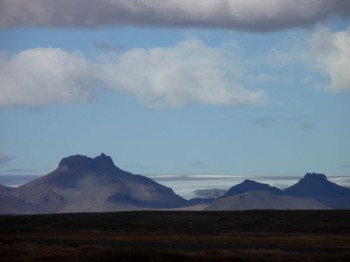
Ice, lava & quality life for women: Iceland. Photo: Soila Lehtonen
In Iceland.
The Daily Beast – the online home of Newsweek Magazine – has compiled the rankings of the best and worst countries for women to live in. 165 countries were analysed by using five factors – justice, health, education, economics and politics – and awarding scores of 0 to 100.
Each category included between four and ten data points, depending on the reliable data points available. The results, published last month, show that for a woman Iceland is the best place: overall score was 100.0. Second was Sweden (99.2), third Canada (96.6), fourth Denmark (95.3) and fifth Finland (92.8). The next five were Switzerland, Norway, USA, Australia and the Netherlands.
The final ranking is based on how much better or worse a country is for women when measured against the average level of women’s rights for all 165 countries – of which the worst three are Yemen, Afghanistan and Chad.
Some progress seems to have been going on in the world lately; in politics women have become more visible. They will now even be allowed to vote in Saudi Arabia. (But there women are still not able to leave the country or work without a permission from a male relative – or drive a car.)
Iceland’s current prime minister is Johanna Sigurdardottir; the country’s score points for politics is 92.8, whereas Finland’s is 100.0.
However, justice and economics do not score as high in Finland as in Iceland. ‘Prevalence of intimate partner physical and sexual violence’ may cause the loss of points in the former case, and ‘women’s wages as a percentage of men’s’ in the latter.
Finland is the only country on the list with 100.0 points in politics: currently the president, 84 of the 200 members of the parliament and nine ministers out of 19 are women. So, it might be quite possible that women will make Finland climb up towards the top of the mountain – or rather, volcano?
Matti Salminen: Yrjö Kallisen elämä ja totuus [The life and truth of Yrjö Kallinen]
15 September 2011 | Mini reviews, Reviews
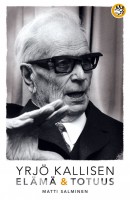 Yrjö Kallisen elämä ja totuus
Yrjö Kallisen elämä ja totuus
[The life and truth of Yrjö Kallinen]
Helsinki: Like Kustannus, 2011. 271 p., ill.
ISBN 978-952-01-0612-6
€ 27, hardback
Counsellor of Education Yrjö Kallinen (1886–1976) was a Social Democrat politician, a passionate speaker and a pacifist who served for one parliamentary term as an MP and for two years as a cabinet minister. Kallinen was a working-class man who independently acquired a broad general education. His life and thought contain many paradoxes and contradictions. In the Civil War (1918) he received four death sentences, though he tried to act as a peace-broker between the Whites and the Reds. Kallinen avoided the death penalty but suffered a long prison sentence. After the Second World War he became Minister of Defence, though in spite of holding the post he did not abandon his pacifism. Kallinen was also strongly influenced by oriental religions and theosophy, and he is known as an early advocate of vegetarianism. The most important sources for this biography are Yrjö Kallinen’s own writings, many of which have never been published before, and his recently discovered correspondence. The summaries of Kallinen’s interviews for foreign newspapers open up interesting perspectives on recent Finnish political history.
Translated by David McDuff
Språk och politisk mobilisering. Finlandssvenskar i publikdemokrati [Language and political mobilisation. Finland-Swedes in public democracy]
10 June 2011 | Mini reviews, Reviews
 Språk och politisk mobilisering. Finlandssvenskar i publikdemokrati
Språk och politisk mobilisering. Finlandssvenskar i publikdemokrati
[Language and political mobilisation. Finland-Swedes in public democracy]
Red. [in Swedish; ed. by] Kimmo Grönlund
Helsingfors: Svenska litteratursällskapet i Finland (The Society of Swedish Literature in Finland), 2011. 236 p.
ISBN 978-951-583-224-5
€ 29, paperback
Under the Finnish Constitution, Finnish and Swedish are the country’s national languages. The status of Swedish is currently the subject of debate: on the one hand there is concern about the adequacy of Swedish-language services, while on the other there is a strong opposition among the Finnish-speaking majority to the mandatory study of Swedish. This book discusses, for example, the basis on which Finland’s 5.5 per cent Swedish-speaking minority elects its party and its candidates in national elections, and the importance of the Swedish language in this choice. Research suggests that Svenska Folkpartiet, the Swedish People’s Party, would gain increased backing if it were to emphasise the language question and seeking support for Swedish-speaking districts, rather than by targeting Finnish-speakers and bilingual citizens with an interest in minority issues. The book also contains a summary of the results of the Svensk politik i Finland (Politics in Swedish-speaking Finland) research project; Kimmo Grönlund – also director of research at Åbo Akademi – was head of the project.
Translated by David McDuff
Jera Hänninen & Jyri Hänninen: Tuhansien aatteiden maa. Ääriajattelua nyky-Suomessa [Land of a thousand ideologies. Extremist thought in contemporary Finland]
11 March 2011 | Mini reviews, Reviews
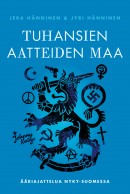 Tuhansien aatteiden maa. Ääriajattelua Nyky-Suomessa
Tuhansien aatteiden maa. Ääriajattelua Nyky-Suomessa
[Land of a thousand ideologies. Extremist thought in contemporary Finland]
Helsinki: Johnny Kniga Kustannus, 2010. 267 p.
ISBN 978-951-0-36072-9
€ 30, paperback
There are a number of extremist ideologies with a foothold in Finland. Even though most such groups are very small, religious and political extremism have experienced growth and do not always remain on the margins. The authors of this book have chosen to include only those ideologies whose efforts are clearly directed against particular groups or that would result in an erosion of democracy if they were to gain some real power. Topics receiving the greatest amount of attention in the media have been immigration and the polarisation within the Finnish Lutheran Church. According to some reports, the Church is being split over the issues of female clergy and homosexuality. This book also covers Finnish-born Islamists who support Sharia law, Communists who distort history and venerate the Soviet Union, honour killings carried out in Finland, and NRA Finland, a hard-line pro-gun lobbying organisation. The authors also discuss how these zealots, having gained more support, have also begun to influence the positions of mainstream political parties.
Translated by Ruth Urbom
What grade is your kid in?
29 October 2010 | Non-fiction, Tales of a journalist
Should a journalist show his hand? Columnist Jyrki Lehtola ponders the pros and cons of showing one’s true political colours
What’s the best way to present an initiative that would get the cynical, lazy news media to take an interest in the outside world?
The easiest way is to make a proposal in which the outside world is actually defined as the news media itself.
This is exactly what Matti Apunen did early this autumn: Apunen, a long-time journalist and the former editor-in-chief of the Aamulehti newspaper, had just left the paper to lobby for Finnish industry and trade interests as director of the Finnish Business and Policy Forum EVA.
He presented the Finnish media with a straw poll, following the Swedish model, in which reporters would anonymously answer questions about their political leanings. More…
Heikki Hiilamo: Kuoleman listat. Suomalaisten salainen apu Chilen vainotuille [Death lists. Secret assistance of the Finns to Chilean dissidents]
17 September 2010 | Mini reviews, Reviews
 Kuoleman listat. Suomalaisten salainen apu Chilen vainotuille
Kuoleman listat. Suomalaisten salainen apu Chilen vainotuille
[Death lists. Secret assistance by Finns to Chilean dissidents]
Helsinki: Otava, 2010. 362 p., ill.
ISBN 978-951-1-24003-7
€ 32, hardback
The 1973 Chilean coup that ousted President Salvador Allende, and the subsequent persecution of dissidents, forced Allende’s supporters to seek asylum in foreign embassies. A number of refugees climbed over the wall of the Santiago home of Finland’s chargé d’affaires, Tapani Brotherus. As the Finnish official line of neutrality was to avoid interfering in the internal affairs of other countries, Brotherus was taking a great personal risk, by allowing this, and keeping it secret from the Finnish Ministry of Foreign Affairs. With the help of the embassy’s undersecretary and the East German diplomat Arnold Voigt, he and his wife succeeded in helping some 2, 200 people to leave Chile. Brotherus also helped 182 political refugees to obtain asylum in Finland. Heikki Hiilamo, who is now Research Professor at Kela, the Social Insurance Institution of Finland, describes the background of the Chilean dictatorship and the development of the broad-based solidarity movement, which has been characterised as one of the central formative experiences of the generation that grew up in 1970s Finland. The movement’s activists included future Finnish presidents Mauno Koivisto and Tarja Halonen, as well as the future Nokia CEO Jorma Ollila.
Pleased to see me?
16 July 2009 | Columns, Tales of a journalist

Illustration: Joonas Väänänen
When the Finnish media developed a crush on the country’s foreign minister, writes Jyrki Lehtola, no one could foresee the consequences. Especially if the object of their affections might begin to believe what they say about him…
It is a generally accepted truth that the spiteful media only raise people up in order to cast them down again a moment later.
Generally accepted truths are often not the case, although the media’s amorous relationships are, as a general rule, of short duration. More…

